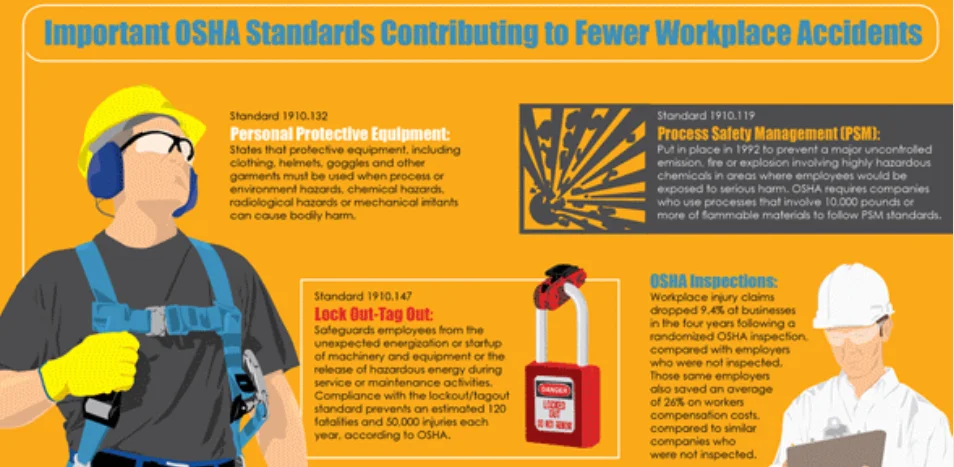May 7, 2016
How OSHA Changed the Game for Worker Safety (Infographic)

May 7, 2016

Let’s talk about worker safety. If you’ve ever seen those wild, black-and-white photos of men building skyscrapers with no hard hats or harnesses, you get it. Before OSHA came along in the 1970s, worker safety was barely on anyone’s radar. It was a time where profits often came before people.
Thankfully, when OSHA started enforcing safety regulations, it changed the game. This isn’t just a “feeling”—the data proves it. Countless lives have been saved, and as this infographic shows, preventable injuries have dropped dramatically.
It’s hard to imagine, but before 1971, there were no national standards for worker safety. If a machine was dangerous, it was just… dangerous. If the air was full of toxic dust, you were told to just “deal with it.”
This was the environment that led to the creation of the Occupational Safety and Health Administration (OSHA). The goal was simple: to ensure safe and healthful working conditions for every American worker.
OSHA’s mission is straightforward: prevent injuries, save lives. They do this in a few key ways:
This is the best part. When you look at the data, the impact is undeniable. As you can see in the infographic below, the change has been staggering. Since 1970, workplace fatalities have been cut by more than 60%, and occupational injury and illness rates have dropped by over 75%. All this happened while the U.S. workforce *doubled* in size. That’s not an accident; that’s the result of a dedicated focus on worker safety.
OSHA’s primary mission is to “assure safe and healthful working conditions for working men and women by setting and enforcing standards and by providing training, outreach, education and assistance.”
The General Duty Clause is a “catch-all” rule. It states that employers must provide a workplace that is “free from recognized hazards that are causing or are likely to cause death or serious physical harm.” This applies even if there isn’t a *specific* OSHA standard for that hazard.
The impact is massive. Since OSHA was created in 1970, workplace fatalities in the U.S. have fallen by over 60%, and rates of reported injuries and illnesses have dropped by more than 75%—all while the workforce has more than doubled.